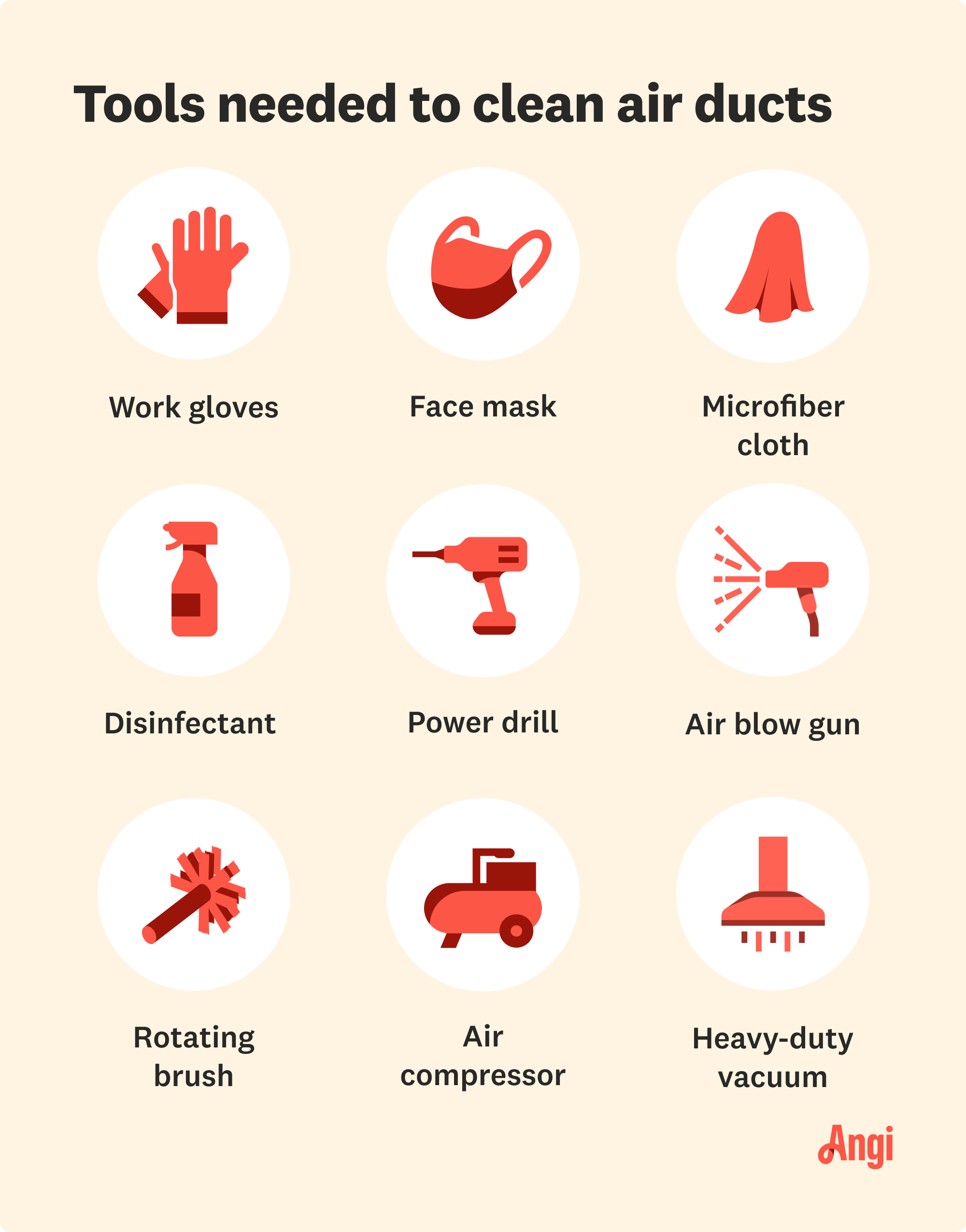Can Flexible Air Ducts Be Cleaned?
Get that gunk out of your system (carefully)


With ridges and nooks and crannies, flexible ductwork can trap dust in a lot of places.
You can clean flexible air ducts, but it's best to hire a professional to do the job.
When there's extensive damage, replacing the ductwork is a better option.
Your HVAC system sends heated or cooled air throughout your home, keeping you warm and cozy or cool and comfortable, depending on the season. Over time, dust and debris can build up in the ducts, affecting the efficiency of your system. While you may be familiar with cleaning rigid ducts, you may wonder if flexible air ducts can be cleaned. The answer is yes, but to avoid damaging the ducts, you should hire a pro to clean them.
What Is Flexible Ductwork?
Flexible ductwork is made from aluminum, PVC, or aluminum coated with PVC. Unlike rigid ducts, which are made from sturdy aluminum or steel, flexible ducts can bend and flex, making them ideal for use in cramped spaces or around tight corners.
Can Flexible Ductwork Be Cleaned?
You can clean flexible ductwork yourself, or at least hire someone who cleans air ducts to do the job.
A professional air duct cleaner will use the right tools for the job to ensure that they remove any dirt and debris from inside the duct and that they don't cause damage. Flexible ducts are much more fragile than rigid ductwork. They also break down more easily, so whoever does the cleaning job needs to be extra careful.
Pros and Cons of Cleaning Flex Ducts
One of the biggest advantages of cleaning flex ducts is that it can improve airflow in your home. When the ducts become full of dust and debris, it's more difficult for air to filter through, causing your HVAC system to work harder.
Cleaning your home's air ducts can also lower your exposure to allergens.
However, cleaning flexible ducts involves risk, especially if you try to do it yourself or hire someone who's not familiar with the care and attention flexible ductwork requires. The ducts can be easily torn or the insides damaged during the cleaning process, meaning you may end up needing to replace the entire duct.
How to Clean Flexible Air Ducts

Thorough air duct cleaning takes specialized equipment to remove dust, debris, and allergens without damaging the ductwork. Inspecting the ducts before cleaning helps prevent accidental punctures, especially in flexible materials. Here’s how the process works:
A high-powered vacuum creates negative pressure to pull contaminants out of the ducts.
Rotary brush loosens dirt and debris from duct walls for easier removal.
Compressed air tools dislodge stubborn buildup in hard-to-reach areas.
Remember, hiring a professional ensures the job is done correctly, reduces the risk of damage, and keeps your system running efficiently.
How Much Does Professional Duct Cleaning Cost?
Typically, air duct cleaning costs around $390, though prices can vary between $150 and $800. For homeowners, it is worth the expense because your duct system is responsible for maintaining indoor air quality. Occasional cleaning helps remove contaminants like dust and mold and keeps your home's air fresh. Lastly, and just as important, cleaning keeps your HVAC system running smoothly.
DIY vs. Hiring a Pro
Whether you have flexible air ducts, rigid ducts, or a combination of the two, cleaning ductwork is a job to leave to the professionals. A local air duct cleaner will have the specialized equipment needed to effectively remove dirt and dust from your ducts with little risk of damage. A pro will also have the know-how required to handle delicate, flexible ductwork without tearing or otherwise destroying it.
Frequently Asked Questions
Signs your ductwork needs cleaning include visible dust buildup, musty odors, increased allergy symptoms, and reduced airflow. If you see dust blowing from vents, find mold inside ducts, or notice a spike in your energy bills, it’s time for a professional inspection and cleaning to improve air quality and efficiency.
While you can attempt to remove mold from ductwork using a mixture of water, baking soda, and laundry detergent, flexible ducts are fragile and may tear when you scrub at the mold to remove it. If you suspect mold is growing in your flexible ductwork, it’s best to contact a professional for help.
Flexible air ducts could last anywhere between 10 and even 30 years, depending on how well they’re maintained, environmental factors that may lead to deterioration and other circumstances. While other types of ductwork are sturdier and more sustainable, flex ducts are a solution for homeowners short on space for sheet metal ducts.
Flex ducts' main problem is also their main strength: their flexibility. Because the material they are made from has little structural support, they can start to sag or compress over time. They can also be more challenging to clean than sturdier ductwork. However, it’s precisely this flexible nature that makes them a good solution for those who need a space-saving solution for their ductwork.














